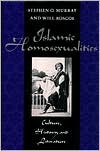Category Books
- Fiction Books & Literature
- Graphic Novels
- Horror
- Mystery & Crime
- Poetry
- Romance Books
- Science Fiction & Fantasy
- Thrillers
- Westerns
- Ages 0-2
- Ages 3-5
- Ages 6-8
- Ages 9-12
- Teens
- Children's Books
- African Americans
- Antiques & Collectibles
- Art, Architecture & Photography
- Bibles & Bible Studies
- Biography
- Business Books
- Christianity
- Computer Books & Technology Books
- Cookbooks, Food & Wine
- Crafts & Hobbies Books
- Education & Teaching
- Engineering
- Entertainment
- Foreign Languages
- Game Books
- Gay & Lesbian
- Health Books, Diet & Fitness Books
- History
- Home & Garden
- Humor Books
- Judaism & Judaica
- Law
- Medical Books
- New Age & Spirituality
- Nonfiction
- Parenting & Family
- Pets
- Philosophy
- Political Books & Current Events Books
- Psychology & Psychotherapy
- Reference
- Religion Books
- Science & Nature
- Self Improvement
- Sex & Relationships
- Social Sciences
- Sports & Adventure
- Study Guides & Test Prep
- Travel
- True Crime
- Weddings
- Women's Studies
Islamic Homosexualities: Culture, History, and Literature » (New Edition)

Authors: Stephen Murray, Will Roscoe, Eric Allyn, Louis Crompton, Mildred Dickemann
ISBN-13: 9780814774687, ISBN-10: 0814774687
Format: Paperback
Publisher: New York University Press
Date Published: February 1997
Edition: New Edition
Author Biography: Stephen Murray
Will Roscoe is the award-winning author of The Zuni Man/Womanand Queer Spirits: A Gay Men's Myth Book and the editor of Living the Spirit: A Gay American Indian Anthology and Radically Gay: Gay Liberation in the Words of its Founder by Harry Hay.
Stephen O. Murray is a comparative sociologist who lives in San Francisco. He is the author of American Gay, Latin American Male Homosexualities, Oceanic Homosexualities, and a half dozen other books.
Book Synopsis
The dramatic impact of Islamic fundamentalism in recent years has skewed our image of Islamic history and culture. Stereotypes depict Islamic societies as economically backward, hyper-patriarchal, and fanatically religious. But in fact, the Islamic world encompasses a great diversity of cultures and a great deal of variation within those cultures in terms of gender roles and sexuality.
The first collection on this topic from a historical and anthropological perspective, Homosexuality in the Muslim World reveals that patterns of male and female homosexuality have existed and often flourished within the Islamic world. Indeed, same-sex relations have, until quite recently, been much more tolerated under Islam than in the Christian West.
Based on the latest theoretical perspectives in gender studies, feminism, and gay studies, Homosexuality in the Muslim World includes cultural and historical analyses of the entire Islamic world, not just the so-called Middle East. Essays show both age-stratified patterns of homosexuality, as revealed in the erotic and romantic poetry of medieval poets, and gender-based patterns, in which both men and women might, to varying degrees, choose to live as members of the opposite sex. The contributors draw on historical documents, literary texts, ethnographic observation and direct observation by both Muslim and non-Muslim authors to show the considerable diversity of Islamic societies and the existence of tolerated gender and sexual variances.
Table of Contents
| 1 | Introduction | 3 |
| 2 | The Will Not to Know: Islamic Accommodations of Male Homosexuality | 14 |
| 3 | Precursors of Islamic Male Homosexualities | 55 |
| 4 | Muhammad and Male Homosexuality | 87 |
| 5 | Woman-Woman Love in Islamic Societies | 97 |
| 6 | Vision and Passion: The Symbolism of Male Love in Islamic Mystical Literature | 107 |
| 7 | Corporealizing Medieval Persian and Turkish Tropes | 132 |
| 8 | Male Love and Islamic Law in Arab Spain | 142 |
| 9 | Male Homosexuality, Inheritance Rules, and the Status of Women in Medieval Egypt: The Case of the Mamluks | 161 |
| 10 | Homosexuality among Slave Elites in Ottoman Turkey | 174 |
| 11 | Male Homosexuality in Ottoman Albania | 187 |
| 12 | The Balkan Sworn Virgin: A Cross-Gendered Female Role | 197 |
| 13 | Some Nineteenth-Century Reports of Islamic Homosexualities | 204 |
| 14 | Gender-Defined Homosexual Roles in Sub-Saharan African Islamic Cultures | 222 |
| 15 | Institutionalized Gender-Crossing in Southern Iraq | 233 |
| 16 | The Sohari Khanith | 244 |
| 17 | Male Actresses in Islamic Parts of Indonesia and the Southern Philippines | 256 |
| 18 | Two Baluchi Buggas, a Sindhi Zenana, and the Status of Hijras in Contemporary Pakistan | 262 |
| 19 | The Other Side of Midnight: Pakistani Male Prostitutes | 267 |
| 20 | Not-So-Gay Life in Pakistan in the 1980s and 1990s | 275 |
| 21 | Two Islamic AIDS Education Organizations | 297 |
| 22 | Conclusion | 302 |
| Appendix | 321 | |
| Authors | 323 | |
| Index | 325 |
Subjects
 Social Sciences
Social Sciences  Islamic Studies
Islamic StudiesScience & Nature
 Social Sciences
Social Sciences  Islamic Studies
Islamic StudiesSocial Sciences
 Gay & Lesbian Studies
Gay & Lesbian Studies  Multicultural Aspects / Gay & Lesbian Communities
Multicultural Aspects / Gay & Lesbian CommunitiesSocial Sciences
 Islamic Studies
Islamic Studies  Islamic Studies - General & Miscellaneous
Islamic Studies - General & Miscellaneous
